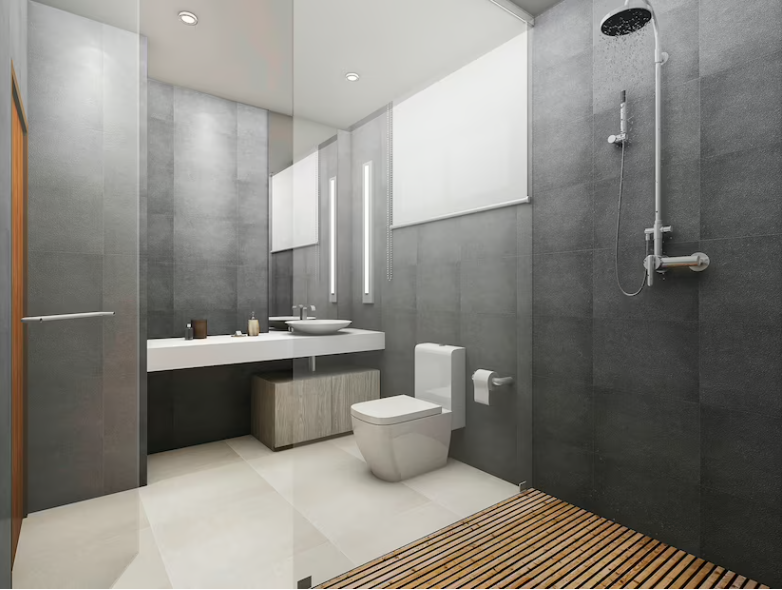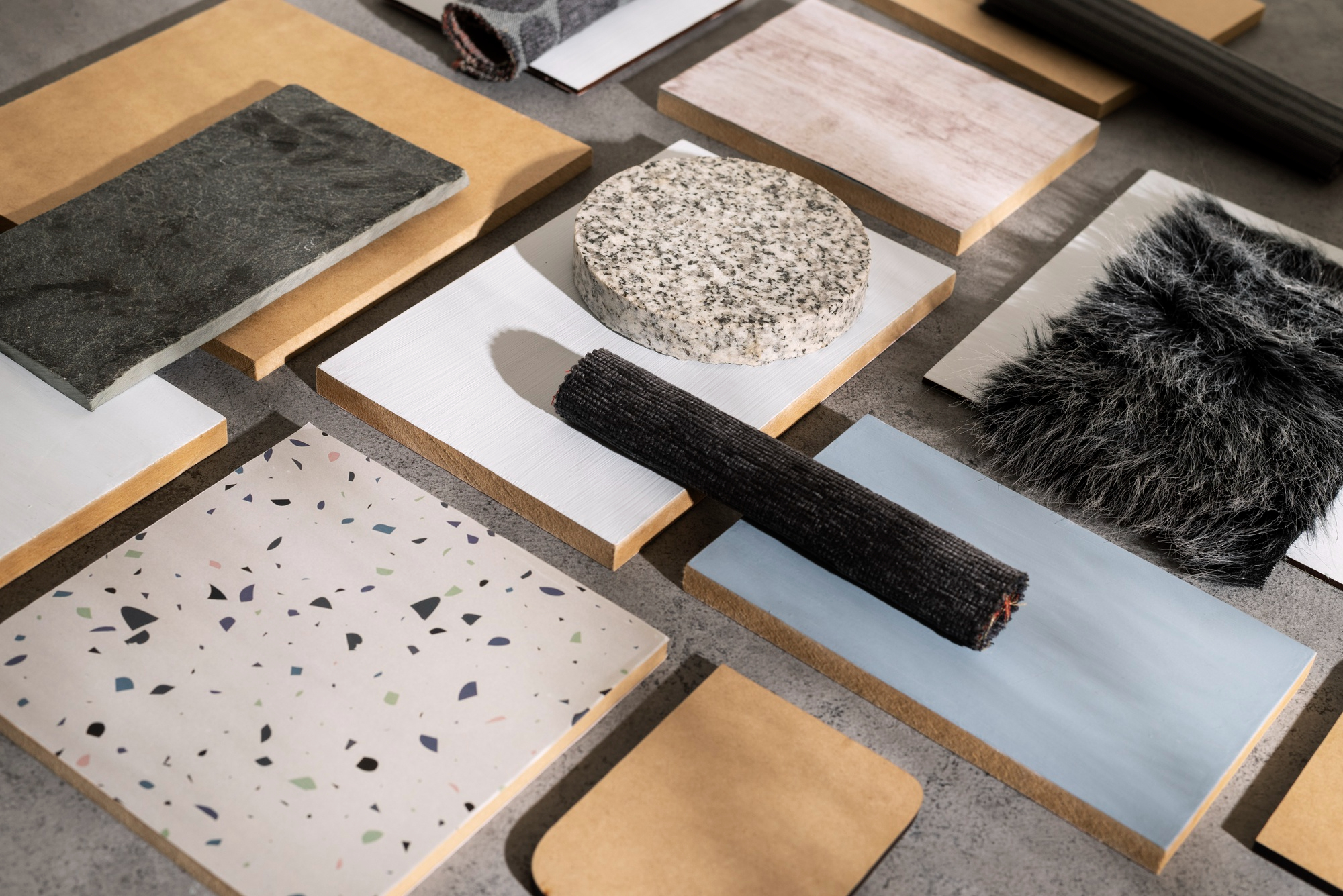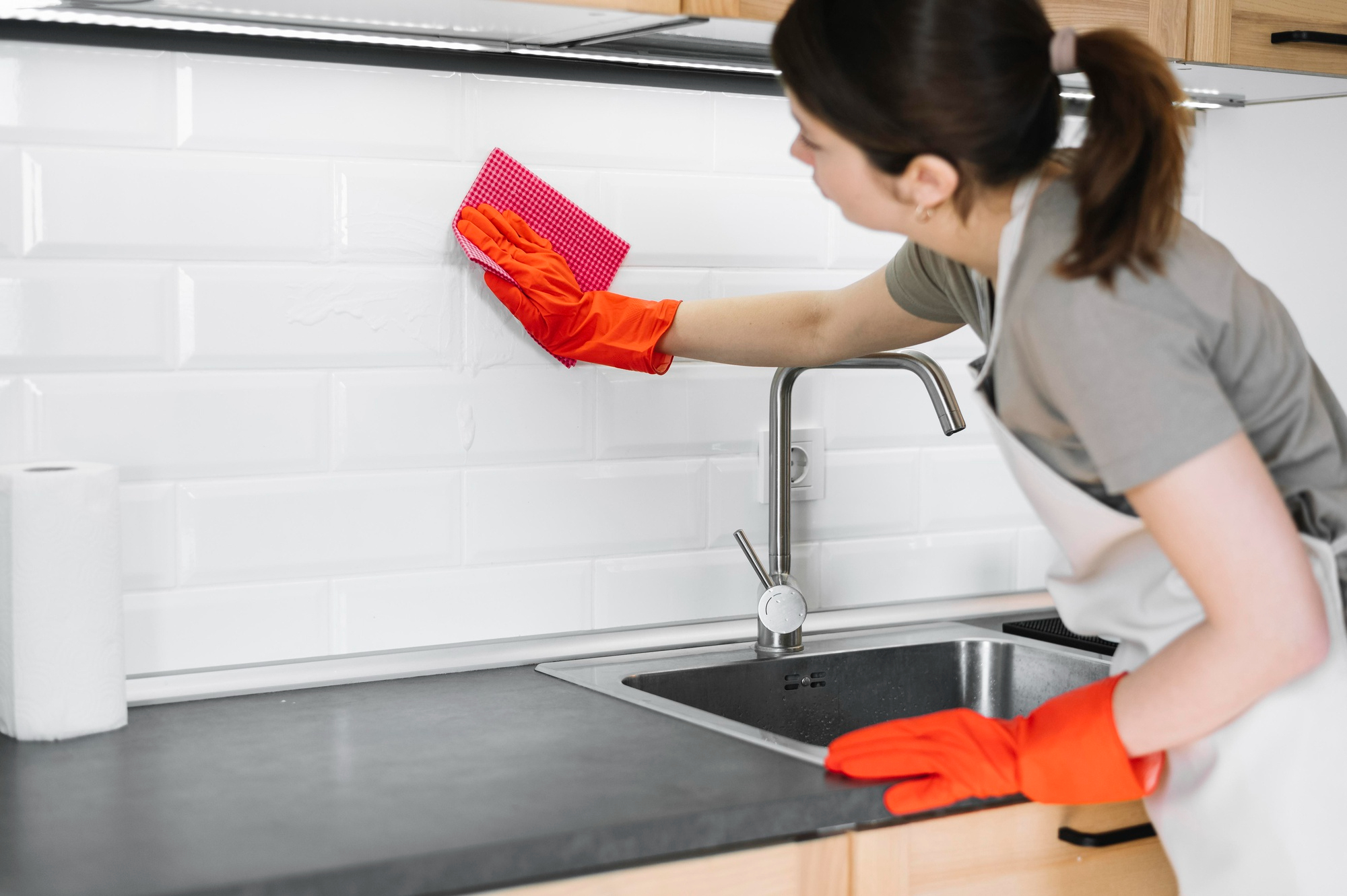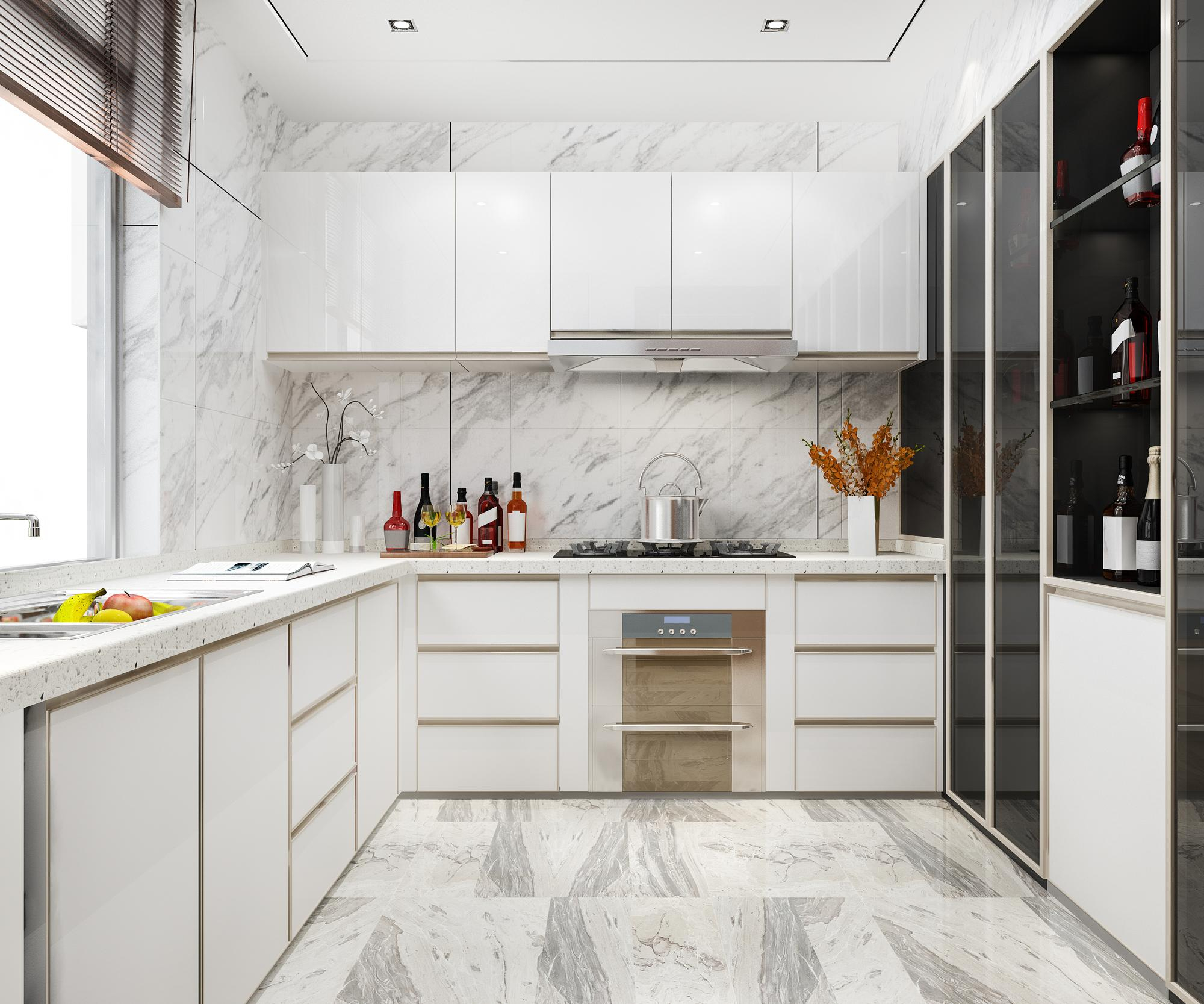Best floor tiles for home
Choosing the right floor tiles for your home is an important decision that can have a big impact on the overall look and feel of your space. There are many different types of floor tiles available, each with its own advantages and disadvantages. In this article, we’ll explore some of the best floor tiles for home use to help you make an informed decision.
Porcelain Tiles
Porcelain tiles are one of the most popular types of floor tiles for home use. They are extremely durable and resistant to water, stains, and scratches, which makes them ideal for high-traffic areas like kitchens and bathrooms. Porcelain tiles are available in a wide variety of colors and patterns, so they can be used to create a variety of different design styles.
Ceramic Tiles
Ceramic tiles are another popular choice for home flooring. Like porcelain tiles, ceramic tiles are durable and water-resistant, which makes them a good choice for bathrooms and kitchens. They are also relatively affordable and come in a wide range of colors and patterns.
Natural Stone Tiles
Natural stone tiles like marble, granite, and slate are a popular choice for homeowners who want a high-end look for their floors. Natural stone tiles are available in a range of colors and patterns, and each piece is unique, which can add character to your home. However, natural stone tiles can be more expensive than other types of tiles, and they require regular maintenance to keep them looking their best.
Vinyl Tiles
Vinyl tiles are a more affordable option for home flooring. They are easy to install and come in a range of styles, including options that mimic the look of natural stone and hardwood. Vinyl tiles are also water-resistant, which makes them a good choice for bathrooms and kitchens.
Hardwood Tiles
Hardwood tiles are a popular choice for homeowners who want the warmth and beauty of natural wood flooring without the high cost. Hardwood tiles are made from real wood and are available in a variety of species and finishes. They are easy to install and can be sanded and refinished if they become damaged over time.
Laminate Tiles
Laminate tiles are another affordable option for home flooring. They are made from multiple layers of materials that are fused together, which makes them durable and resistant to scratches and stains. Laminate tiles come in a wide range of colors and patterns, and some options even mimic the look of natural stone and hardwood.
When choosing the best floor tiles for your home, it’s important to consider factors like durability, style, and maintenance requirements. Each type of tile has its own advantages and disadvantages, so it’s important to choose the option that best fits your needs and budget. With so many options available, you’re sure to find a tile that will help you create the look and feel you want in your home.
Bathroom floor tiles price
The price of bathroom floor tiles can vary widely depending on a number of factors, including the material, size, and style of the tiles. In general, the cost of bathroom floor tiles can range from a few dollars per square foot to several hundred dollars per square foot. In this article, we’ll explore some of the factors that can impact the price of bathroom floor tiles and provide some estimates for different types of tiles.
Material
The material of the bathroom floor tiles is one of the most important factors that can impact the price. Some of the most common materials for bathroom floor tiles include porcelain, ceramic, natural stone, and vinyl. Porcelain and ceramic tiles are typically more affordable, with prices ranging. Natural stone tiles, like marble and granite, can be more expensive, with prices ranging . Vinyl tiles are often the most affordable option, with prices ranging .
Size
The size of the tiles can also impact the price. Larger tiles can be more expensive than smaller tiles because they require more material to manufacture. Additionally, larger tiles can be more difficult to install, which can also impact the overall cost.
Style
The style of the tiles can also impact the price. Some styles, like basic white or beige tiles, may be more affordable than intricate mosaic or patterned tiles. Additionally, tiles with unique shapes or textures may be more expensive than standard square or rectangular tiles.
Installation
The cost of installation is another factor to consider when estimating the price of bathroom floor tiles. The cost of installation can vary depending on the complexity of the job, the type of tiles being installed, and the location of the installation.
Best Bathroom floor and Wall tiles
Choosing the best bathroom floor and wall tiles can be a daunting task, as there are many factors to consider, such as the material, durability, style, and color. In this article, we’ll explore some of the top options for bathroom floor and wall tiles that will not only enhance the appearance of your bathroom but also provide a functional and durable surface.
Floor Tiles:
Ceramic Tiles: Ceramic tiles are a popular choice for bathroom floors because they are affordable, durable, and easy to maintain. They are available in a wide range of colors, patterns, and styles, and can be used to create a variety of looks, from classic to modern.
Porcelain Tiles: Porcelain tiles are similar to ceramic tiles but are more durable and water-resistant. They are ideal for high-moisture areas, such as bathrooms, and come in a range of finishes, from matte to glossy.
Natural Stone Tiles: Natural stone tiles, such as marble, granite, and travertine, are elegant and sophisticated, adding a touch of luxury to your bathroom. They are durable, long-lasting, and come in a variety of colors and patterns. However, they can be more expensive than other tile options and require regular maintenance.
Vinyl Tiles: Vinyl tiles are an affordable and durable option for bathroom floors. They come in a range of styles and colors, including options that mimic the look of natural stone or wood. They are easy to install and require minimal maintenance.
Wall Tiles:
Ceramic Tiles: Ceramic tiles are a popular choice for bathroom walls because they are affordable, easy to clean, and available in a wide range of colors and styles. They can be used to create a variety of looks, from traditional to modern, and are suitable for both shower walls and backsplashes.
Glass Tiles: Glass tiles are a sleek and modern option for bathroom walls. They come in a range of colors and finishes, from clear to frosted, and can be used to create stunning mosaics or accents. They are easy to clean and durable, making them ideal for high-moisture areas.
Subway Tiles: Subway tiles are a classic option for bathroom walls, adding a timeless and elegant look to your space. They come in a variety of colors and sizes, and can be arranged in different patterns, such as stacked or herringbone.
Natural Stone Tiles: Natural stone tiles, such as marble or granite, can also be used for bathroom walls to add a touch of luxury and sophistication. They come in a range of colors and patterns, but can be more expensive than other tile options and require regular maintenance.
When choosing bathroom floor and wall tiles, it’s important to consider your personal style and budget, as well as the durability and maintenance requirements of each option. With the right tile choice, you can create a beautiful and functional bathroom that will last for years to come.
Affordable tile store in your area
When it comes to finding an affordable tile store in your area, there are a few things you can do to help you find the best option for your needs. In this article, we’ll explore some tips and tricks to help you find the perfect tile store that offers high-quality products at an affordable price.
Do Your Research
The first step to finding an affordable tile store is to do your research. Start by searching for tile stores in your area online, and check out their websites to see what they have to offer. Look for reviews and customer feedback to get a sense of their quality and pricing. You can also ask friends, family, or coworkers for recommendations if they have recently renovated their homes and used tiles.
Compare Prices
Once you have a list of potential tile stores, compare prices between them. This will give you an idea of the average price range for tiles in your area and help you identify any outliers. You can do this by visiting the stores in person or by checking their online catalogs.
Look for Discounts and Promotions
Many tile stores offer discounts and promotions throughout the year, so be on the lookout for these. This could include seasonal sales, clearance items, or special discounts for first-time customers. You can sign up for newsletters and email alerts from tile stores to stay informed about these promotions.
Consider the Material
The material of the tile can also affect its price. Ceramic and porcelain tiles tend to be more affordable, while natural stone tiles like marble and granite can be more expensive. Keep in mind that certain materials may be more durable and long-lasting, which could save you money in the long run.
Ask About Installation Services
If you’re not confident in your ability to install tiles yourself, you may want to consider hiring a professional. Some tile stores offer installation services, which could save you time and money. Ask about their installation services and get a quote to see if it fits within your budget.
Negotiate
Don’t be afraid to negotiate with tile stores to get the best price possible. If you’re purchasing a large quantity of tiles, or if you’re a repeat customer, you may be able to negotiate a better price. Be polite but firm when negotiating and don’t be afraid to walk away if you’re not happy with the price.
In conclusion, finding an affordable tile store in your area takes some research and comparison shopping. Be sure to consider the material, discounts, installation services, and negotiate for the best price possible. With these tips, you can find high-quality tiles at an affordable price that will make your home look beautiful.
The Versatility of Tiles: From Floors to Walls to Backsplashes
Tiles are a versatile and practical choice for home decor, with a wide range of applications in different areas of the home. From floors to walls to backsplashes, tiles offer durability, easy maintenance, and endless design possibilities. In this blog, we will explore the versatility of tiles and their various uses in home decor.
Floors
Tiles are a popular choice for flooring in many areas of the home, especially high-traffic areas such as entryways, kitchens, and bathrooms. There are many types of tiles available for flooring, such as ceramic, porcelain, natural stone, and even glass.
Ceramic tiles are a common choice for flooring because they are durable, moisture-resistant, and come in a variety of sizes, colors, and patterns. Porcelain tiles, on the other hand, are denser and more durable than ceramic tiles, making them suitable for high-traffic areas. Natural stone tiles, such as marble, granite, and slate, offer a unique and elegant look but require more maintenance than ceramic or porcelain tiles.
When choosing tiles for flooring, it’s important to consider factors such as slip resistance, durability, and ease of cleaning. Tiles with textured or matte finishes can provide better slip resistance, while larger tiles can create a seamless look with fewer grout lines. Proper installation and maintenance of tiles can also help prolong their lifespan and maintain their appearance.
Walls
Tiles are also a popular choice for wall coverings, especially in areas that are exposed to moisture, such as bathrooms and kitchens. Wall tiles can add color, texture, and visual interest to a room, while also providing a practical solution for moisture and stain resistance.
There are many types of wall tiles available, ranging from classic subway tiles to intricate mosaic patterns. Subway tiles, with their rectangular shape and clean lines, are a popular choice for creating a timeless and versatile look in any room. Mosaic tiles, on the other hand, can create a more intricate and artistic look with their small, irregular shapes and varying colors.
When choosing tiles for walls, it’s important to consider the size and layout of the tiles, as well as the color and pattern. Larger tiles can create a more dramatic and modern look, while smaller tiles can add texture and detail to a space. It’s also important to choose tiles that are moisture-resistant and easy to clean, especially in areas such as showers and backsplashes.
Backsplashes
Tiles are a popular choice for backsplashes in kitchens and bathrooms, offering a practical solution for protecting walls from moisture, grease, and stains. Backsplashes can also add color, texture, and pattern to a room, serving as a focal point or accent feature.
There are many types of tiles that can be used for backsplashes, from classic subway tiles to decorative mosaic patterns. Subway tiles are a timeless and versatile choice for creating a clean and simple look in any kitchen or bathroom. Mosaic tiles, on the other hand, can create a more intricate and artistic look with their small, irregular shapes and varying colors.
When choosing tiles for backsplashes, it’s important to consider the overall color scheme and style of the room. Tiles that contrast with the countertop or cabinetry can create a striking visual effect, while tiles that match or complement the surrounding elements can create a cohesive and harmonious look. It’s also important to choose tiles that are easy to clean and maintain, as backsplashes are often exposed to moisture and stains.
In conclusion, tiles offer a versatile and practical solution for home decor, with many applications in different areas of the home. From flooring to walls to backsplashes, tiles can add color, texture, and pattern to a room, while also providing durability and easy maintenance.
How to make your living room more beautiful with the best tiles
Tiles can be a beautiful addition to any living room, adding texture, color, and pattern to your space. Whether you’re looking to add a statement wall or create a stunning floor, there are many ways to use tiles to enhance the beauty of your living room. Here are some tips to help you make your living room more beautiful with the best tiles:
- Choose the Right Type of Tile
There are many different types of tiles available, from ceramic and porcelain to natural stone and glass. Each type of tile has its own unique characteristics and benefits, so it’s important to choose the right type of tile for your living room.
Ceramic and porcelain tiles are popular choices for living rooms because they are durable, easy to clean, and come in a wide variety of colors and patterns. Natural stone tiles, like marble or travertine, add a touch of luxury to your living room, but they require more maintenance than ceramic or porcelain tiles. Glass tiles are a great option if you’re looking for a modern, sleek look, but they can be more expensive than other types of tiles.
- Consider the Color and Pattern
The color and pattern of your tiles can have a big impact on the overall look and feel of your living room. If you have a neutral color scheme in your living room, consider adding tiles with a bold pattern or vibrant color to create a statement wall or floor.
If you have a more colorful living room, choose tiles that complement your existing color scheme. You can also choose tiles with a subtle pattern or texture to add visual interest without overwhelming the space.
- Mix and Match Tiles
Mixing and matching different types of tiles can create a unique and interesting look in your living room. For example, you can use a combination of ceramic and glass tiles to create a mosaic feature wall, or mix different shades of porcelain tiles to create a patterned floor.
Just be sure to choose tiles that complement each other and create a cohesive look in your living room.
- Create a Focal Point
Tiles can be used to create a focal point in your living room, drawing the eye to a specific area of the space. Consider creating a feature wall with tiles, or using tiles to create a border or pattern around a fireplace or other architectural feature.
- Use Tiles to Define Spaces
If your living room is an open-plan space, you can use tiles to help define different areas of the room. For example, you can use a different type of tile to create a “rug” in the seating area, or use tiles to create a pathway through the room.
- Consider the Size of Your Tiles
The size of your tiles can also have an impact on the overall look of your living room. Larger tiles can make a space feel bigger and more open, while smaller tiles can create a more intricate and detailed look.
Consider using larger tiles on the floor or as a feature wall, and smaller tiles as an accent or border.
- Don’t Forget About Grout
The grout you choose can also have an impact on the overall look of your living room. Consider using a contrasting grout color to make your tiles stand out, or choose a grout color that matches your tiles to create a more seamless look.
- Hire a Professional
Installing tiles can be a challenging and time-consuming task, so it’s important to hire a professional if you’re not confident in your DIY skills. A professional installer can help you choose the right type of tiles for your living room, and ensure that they are installed correctly and safely.
In conclusion, tiles can be a beautiful and versatile addition to any living room. With the right type of tile, color, and pattern, you can create a space that is both stylish and functional.
Easy Tips to clean kitchen tiles
Kitchen tiles are an excellent choice for any home because they are durable, easy to clean, and add a touch of style to your kitchen. However, over time, kitchen tiles can accumulate dirt, grease, and grime, making them look dull and dirty. To keep your kitchen tiles looking their best, it’s important to clean them regularly. Here are some easy tips to clean your kitchen tiles:
- Sweep or Vacuum Regularly
The first step to keeping your kitchen tiles clean is to sweep or vacuum them regularly. This will help remove loose dirt, dust, and debris that can scratch or damage your tiles. Use a soft-bristled broom or a vacuum cleaner with a soft brush attachment to avoid damaging the tiles.
- Mop with Warm Water
Once you’ve removed any loose dirt and debris, it’s time to mop your kitchen tiles. Use a bucket of warm water and a mop or a microfiber cloth to wipe down the tiles. Avoid using hot water, as it can damage some types of tiles. You can also add a few drops of dish soap or a mild cleaning solution to the water to help break down any grease or grime on the tiles.
- Use Baking Soda and Vinegar
For tougher stains or grime buildup, mix baking soda and vinegar to create a natural cleaning solution. Start by sprinkling baking soda over the affected area, then spray vinegar over the top. Let the mixture sit for a few minutes, then scrub the area with a soft brush or sponge. Rinse with warm water and dry with a clean cloth.
- Try a Steam Cleaner
For a deep clean, consider using a steam cleaner to clean your kitchen tiles. Steam cleaners use high-pressure steam to remove dirt, grease, and grime from your tiles, without the need for harsh chemicals. Be sure to read the manufacturer’s instructions carefully and test the steam cleaner on a small area first to avoid damaging your tiles.
- Use a Grout Cleaner
The grout between your tiles can also collect dirt, grime, and grease over time, making it look dull and dirty. To clean grout, use a grout cleaner or a mixture of baking soda and water. Apply the cleaner to the grout and scrub with a soft-bristled brush. Rinse with warm water and dry with a clean cloth.
- Avoid Harsh Chemicals
While it may be tempting to use harsh chemicals like bleach or ammonia to clean your kitchen tiles, these chemicals can damage or discolor your tiles over time. Instead, opt for mild cleaning solutions like dish soap or vinegar, or use natural cleaning solutions like baking soda and vinegar.
- Wipe Up Spills Immediately
To prevent stains or damage to your kitchen tiles, it’s important to wipe up spills immediately. Use a clean cloth or paper towel to blot up any spills or stains as soon as they occur. This will help prevent the stain from setting into the tiles or grout.
- Clean Regularly
Finally, the best way to keep your kitchen tiles looking their best is to clean them regularly. Sweep or vacuum your tiles daily, and mop them once or twice a week. Clean up spills and stains immediately, and deep clean your tiles and grout every few months.
In conclusion, cleaning your kitchen tiles doesn’t have to be a daunting task. With these easy tips, you can keep your tiles looking their best, without the need for harsh chemicals or expensive cleaning products. So roll up your sleeves and get cleaning!
Kitchen Tiles to Turn Your Kitchen into a Masterpiece
The kitchen is often the heart of the home, where family and friends gather to cook, eat, and socialize. Therefore, it’s important to create a space that is both functional and stylish. One way to add visual interest and personality to your kitchen is by choosing the right tiles. Here are some kitchen tile ideas to turn your kitchen into a masterpiece:
- Subway Tiles
Subway tiles are a classic choice that never goes out of style. They are typically rectangular in shape, and are often used in a brick-like pattern with a horizontal offset. Subway tiles are versatile and can be used in a variety of ways, from a backsplash to a full wall covering. They are also available in a variety of colors and finishes, from glossy white to matte black.
- Patterned Tiles
For a bold and eye-catching look, consider using patterned tiles in your kitchen. These can range from intricate mosaics to bold, graphic designs, and can be used in a variety of ways, from a feature wall to a tiled floor. Patterned tiles can add a sense of depth and interest to an otherwise plain space, and can be especially effective in small kitchens.
- Geometric Tiles
Geometric tiles can add visual interest and texture to your kitchen. Hexagonal, diamond, or even irregularly shaped tiles can be used on their own or mixed and matched for a more eclectic look. Geometric tiles can be used for a backsplash, a tiled floor, or even on the walls.
- Metallic Tiles
For a touch of glamour, consider using metallic tiles in your kitchen. These can be made of materials like copper, brass, or stainless steel, and can be used as accents or for a full backsplash or accent wall. Metallic tiles can add a warm glow to a room, and can be especially striking in modern or industrial-style kitchens.
- Glass Tiles
Glass tiles can add a sleek and modern look to your kitchen. They are available in a variety of colors and finishes, from glossy to matte, and can be used for a backsplash or even as a countertop. Glass tiles are also durable and easy to clean, making them a practical choice for a kitchen.
- Marble Tiles
Marble tiles are a luxurious choice that can add a timeless elegance to your kitchen. They are available in a range of colors and patterns, from classic white to bold black and everything in between. Marble tiles can be used for a backsplash, a tiled floor, or even on the countertops, adding a touch of sophistication to any kitchen.
- Wood-Look Tiles
If you love the look of natural wood floors but want something that is more durable and easier to maintain, consider using wood-look tiles in your kitchen. These tiles are made to mimic the look of natural wood, but are made from materials like porcelain or ceramic, which are more resistant to scratches, stains, and water damage. Wood-look tiles can add warmth and texture to a kitchen, and are available in a range of finishes and colors.
- Large Format Tiles
Large format tiles can create a seamless and modern look in your kitchen. These tiles are typically larger than traditional tiles, and can be used for a backsplash, a tiled floor, or even on the walls. Large format tiles can make a space feel more open and spacious, and can be especially effective in small kitchens.
In conclusion, there are plenty of kitchen tile ideas to turn your kitchen into a masterpiece. Whether you opt for subway tiles, patterned tiles, geometric tiles, metallic tiles, glass tiles, marble tiles, wood-look tiles, or large format tiles, the key is to choose something that complements the overall design of your kitchen and speaks to your personal style.
Unconventional Tile Choices for Bold and Artistic Homeowners
When it comes to home décor, many people opt for safe and traditional choices. However, for the bold and artistic homeowner, there are plenty of unconventional tile choices that can add personality and flair to any room. Here are some options to consider:
- Geometric Shapes
If you’re looking for something a little different than the typical square or rectangular tiles, consider tiles with geometric shapes. Hexagonal, diamond, or even irregularly shaped tiles can add visual interest and texture to a room. These shapes can be used on their own, or mixed and matched for a more eclectic look.
- Metallic Tiles
For a touch of glamour, consider using metallic tiles. These can be made of materials like copper, brass, or stainless steel, and can be used as accents or for a full backsplash or accent wall. Metallic tiles can add a warm glow to a room, and can be especially striking in kitchens or bathrooms.
- Textured Tiles
If you want to add some tactile interest to your tiled surfaces, consider using textured tiles. These can be made from materials like stone, glass, or ceramic, and can be used to create a variety of looks, from rustic to modern. Textured tiles can be especially effective in areas where you want to add a bit of dimension, such as a feature wall or a fireplace surround.
- Patterned Tiles
For a bold and eye-catching look, consider using patterned tiles. These can range from intricate mosaics to bold, graphic designs, and can be used in a variety of ways, from a feature wall to a tiled floor. Patterned tiles can be especially effective in small spaces, as they can add a sense of depth and interest to an otherwise plain area.
- Wood-Look Tiles
If you love the look of wood floors but want something that’s more durable and easier to maintain, consider using wood-look tiles. These tiles are made to mimic the look of natural wood, but are made from materials like porcelain or ceramic, which are more resistant to scratches, stains, and water damage. Wood-look tiles can be used in a variety of ways, from a tiled floor to a feature wall or even a fireplace surround.
- Colored Grout
While not technically a tile choice, colored grout can be a fun and unconventional way to add a pop of color to your tiled surfaces. Colored grout can be used to create contrast or to tie in with other elements in a room, and can be especially effective with white or neutral tiles. Keep in mind that colored grout can be more difficult to maintain than traditional white or gray grout, as it may show dirt or stains more easily.
In conclusion, there are plenty of unconventional tile choices that can add personality and flair to any room. Whether you opt for geometric shapes, metallic tiles, textured tiles, patterned tiles, wood-look tiles, or colored grout, the key is to choose something that speaks to your personal style and complements the overall design of your home. So don’t be afraid to take a chance on something a little different – the results may surprise you!
Tile Care and Maintenance: How to Keep Your Tiled Surfaces Bright and Shiny
Tiles are a beautiful and practical choice for many areas of the home, from floors to walls to backsplashes. However, like any surface in your home, tiles require regular care and maintenance to keep them looking their best. Here are some tips for how to keep your tiled surfaces bright and shiny:
- Clean Regularly
The most important thing you can do to keep your tiles looking their best is to clean them regularly. This means sweeping or vacuuming floors and wiping down walls and backsplashes with a damp cloth or mop. Avoid using abrasive cleaners or scrubbers, as they can damage the surface of the tiles.
- Use the Right Products
When it comes to cleaning your tiles, it’s important to use the right products. For most types of tiles, a mild detergent or tile cleaner is all you need. However, if you have natural stone tiles such as marble or granite, you will need to use a pH-neutral cleaner to avoid damaging the surface.
- Protect Your Grout
The grout between your tiles is just as important as the tiles themselves when it comes to maintaining the appearance of your tiled surfaces. To keep your grout looking its best, make sure to seal it regularly with a grout sealer. This will help to protect it from moisture and stains.
- Deal with Stains Quickly
If you do get a stain on your tiles, it’s important to deal with it quickly. The longer a stain sits on the surface of the tiles, the harder it will be to remove. For most types of stains, a mild detergent or tile cleaner should do the trick. However, for tougher stains such as grease or oil, you may need to use a specialized cleaner.
- Avoid Harsh Chemicals
When it comes to cleaning your tiles, it’s important to avoid using harsh chemicals that can damage the surface. This includes products like bleach, ammonia, and acidic cleaners. If you’re not sure whether a particular product is safe to use on your tiles, test it in an inconspicuous area first.
- Protect Your Tiles
Prevention is key when it comes to maintaining the appearance of your tiles. To avoid damage, make sure to use coasters under glasses and mugs, and to avoid dropping heavy objects on tiled floors. For areas with heavy foot traffic, consider using a rug or mat to protect the surface of the tiles.
- Professional Cleaning and Maintenance
If your tiled surfaces are looking dull or stained despite your best efforts, it may be time to call in a professional cleaner. A professional cleaner will have the tools and expertise to deep-clean your tiles and grout, leaving them looking bright and shiny.
In conclusion, keeping your tiled surfaces looking their best requires regular care and maintenance. By cleaning regularly, using the right products, protecting your grout, dealing with stains quickly, avoiding harsh chemicals, protecting your tiles, and calling in a professional cleaner when needed, you can ensure that your tiles will continue to look bright and shiny for years to come.










